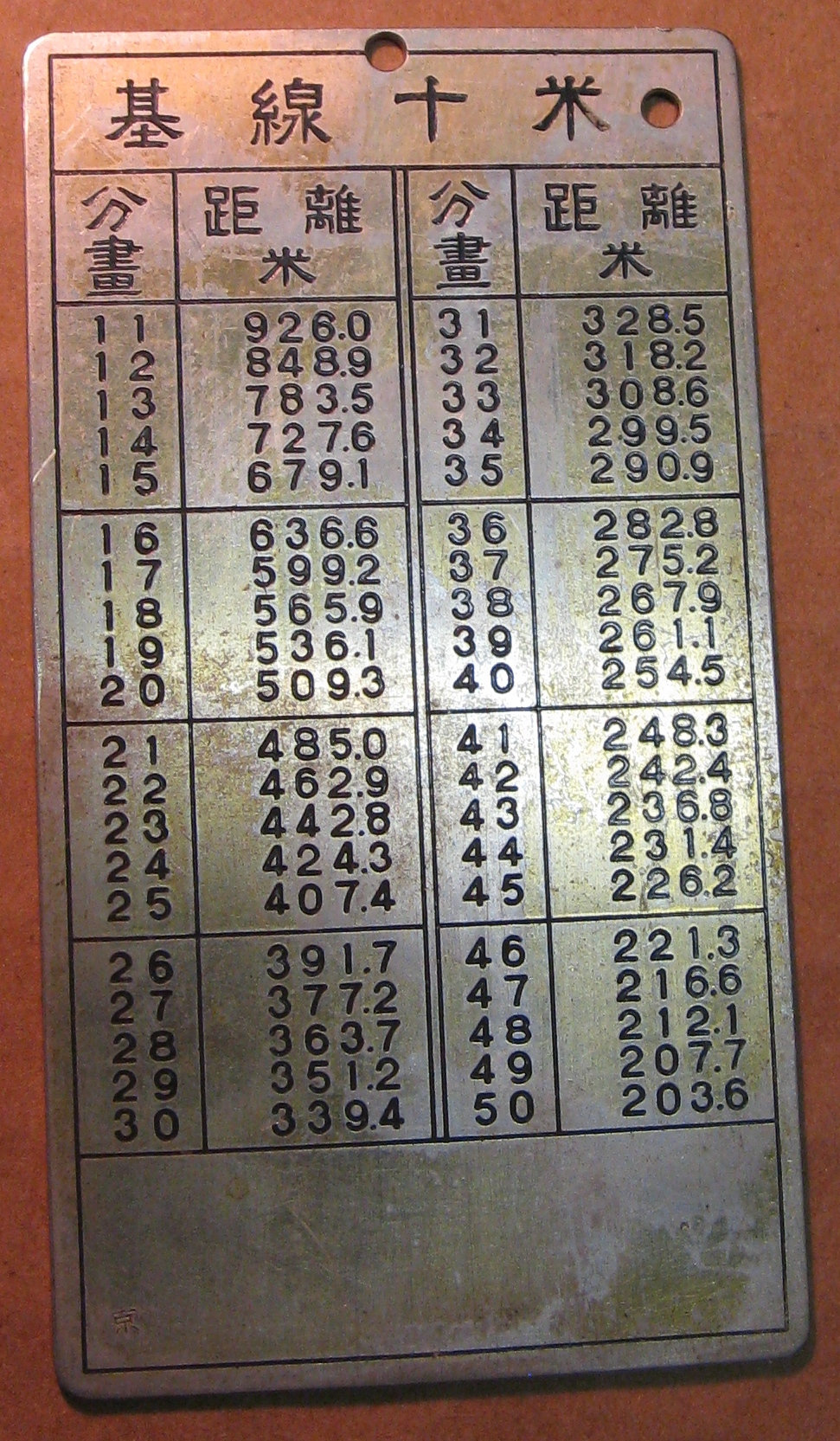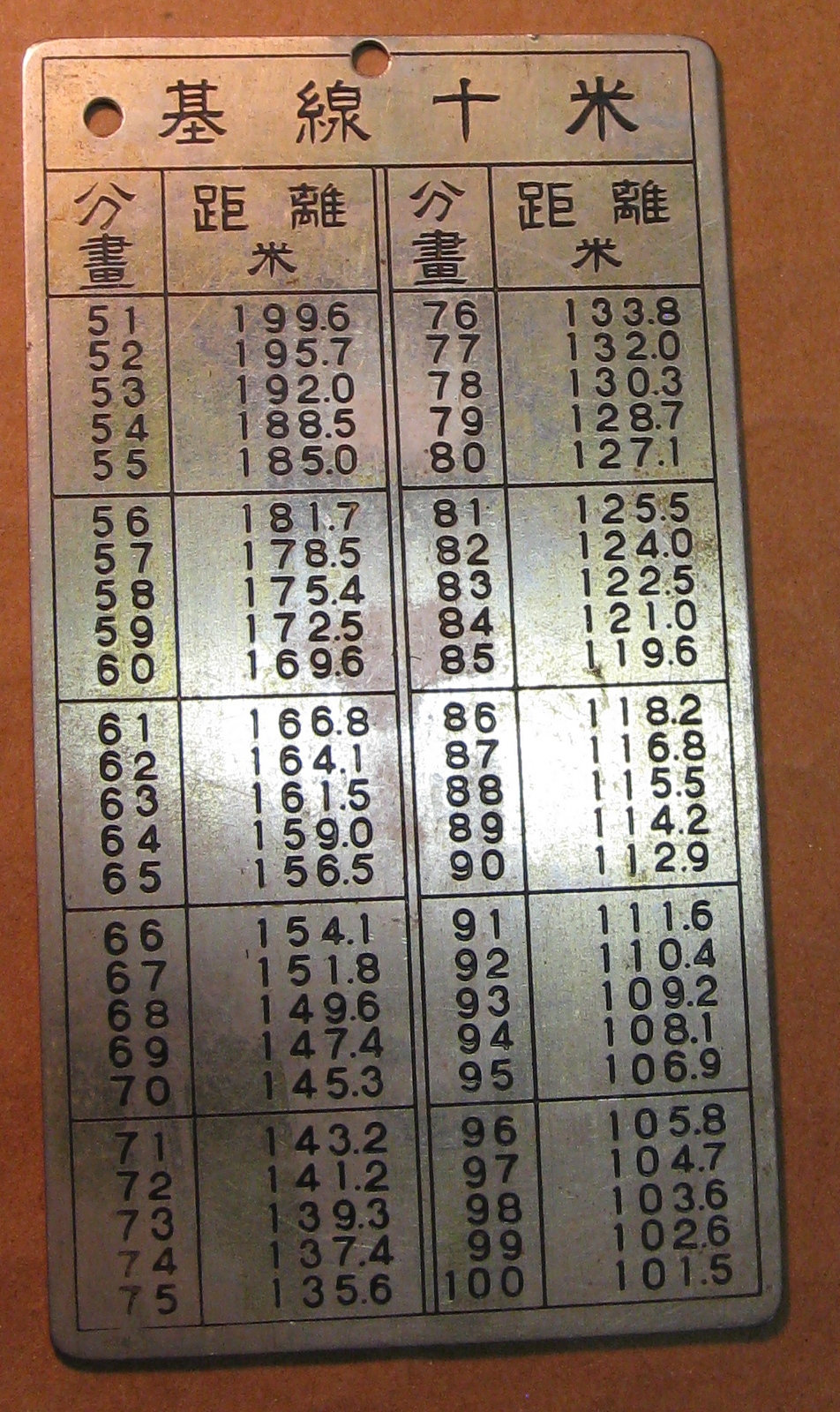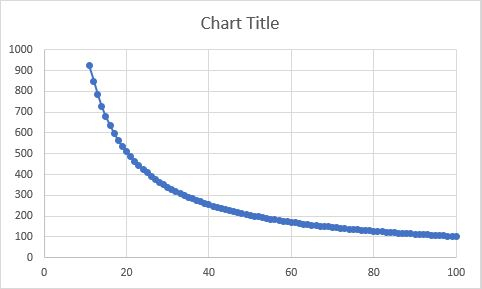What is it? Japanese or Chinese readers on this forum might be able to help.
 tommy44
Posts: 2,320 ✭✭✭✭✭
tommy44
Posts: 2,320 ✭✭✭✭✭
Don't know where else to ask. Any ideas? Heavy, steel? about 60mm wide, 110mm tall and about 1mm thick. I assume it's a conversion table of some sort.


it's crackers to slip a rozzer the dropsy in snide
1
Comments
I'm going to guess it is a modern Chinese tool & die conversion card.
It's Japanese, and a nonlinear table - interval between right column numbers is largest at the start, and just 1.1 at the end.
For engineering, machinists, scientists? Peace Roy
BST: endeavor1967, synchr, kliao, Outhaul, Donttellthewife, U1Chicago, ajaan, mCarney1173, SurfinHi, MWallace, Sandman70gt, mustanggt, Pittstate03, Lazybones, Walkerguy21D, coinandcurrency242 , thebigeng, Collectorcoins, JimTyler, USMarine6, Elkevvo, Coll3ctor, Yorkshireman, CUKevin, ranshdow, CoinHunter4, bennybravo, Centsearcher, braddick, Windycity, ZoidMeister, mirabela, JJM, RichURich, Bullsitter, jmski52, LukeMarshall, coinsarefun, MichaelDixon, NickPatton, ProfLiz, Twobitcollector,Jesbroken oih82w8, DCW
My wife who is Japanese confirms it is Japanese. Across the top, the two first symbols says baseline. The second set of symbols says every 10 meters. The first column (two digit number) is a measurement of weight. Not sure what standard the weight is such as gram, pound etc. as it is not identified. The next column (four digits) is distance measurements in meters. Hopes this helps.
For estimating the throw distance for weights in kg. (as in weapons)? Or...maybe pumpkins....
I don't know but it's not a coin. Maybe the distance's to mount Fuji.
Hoard the keys.
Thanks a bunch. I knew someone here would have the answer. How do I tag this thread as answered?
it's crackers to slip a rozzer the dropsy in snide
Domo arigato gozaimasu !!!
I think you have to start the thread tagged as a question to tag it as answered.
Look like a construction project that spreads around 1/2 mile in distance.
基線 is baseline. 分畫 is zoning or lot. By the way, I do believe these writing are in traditional Chinese that is used in Hong Kong and Taiwan. For example 分畫 in Japanese would be modified Chinese as 分画 or 分劃
I'm from small town Nebraska. It looks like a bingo card from Greece.
``https://ebay.us/m/KxolR5
Multiply each two-digit number by the three-digit plus decimal number and you get approximately 10,150. Therefore, the chart shows you what you get when you divide 10,150 by each number from eleven to one hundred.
Now the question is, 10,150 what? And why can it be divided so many ways?
It seems to be close to y = 10000/x . x being the first column, y the second.
If you want to be specific, both the 10000 and -1 (as in x-to-the-negative-1, same as 1/x) are approximations, and I've closed and didn't save my spreadsheet if someone wants to duplicate it.
Ed. S.
(EJS)
It could be a table for applying fertilizer.
If your tank holds 10,150 kg, and you want to drop 100 kg/meter, your tank will last for 101.5 meters.
(I might be way off on the units; 10,150 kg seems big!)
Is this the 1st bitcoin?
Hoard the keys.
It is interesting, though I have no idea what it may be used for....It does remind me of a conversion chart though -i.e. Customary vs. Metric.... though I know that is not what it is. Cheers, RickO
Ready for another challenge?
Here are some clues:
@northcoin is it used to measure volume?
It's Chinese !!!
Yes and yes it is Chinese.
Here are some details. I took the photos in the National Palace Museum located in Taiwan where ancient Chinese Imperial artifacts were sequestered after the threats from Japan and the Communists forced their relocation from the Hidden City in mainland China where they had traditionally been stored as treasures of the Emperors. (This particular artifact though may have been more recently discovered and added to the museum's collection.)
The particular artifact is from the Xin (Hsin) Dynasty (9-24 AD) and is variously described as a "Jin-liang or Chia liang Fine Standard Measure." It represented a relic of the earlier first Han Dynasty which had standardized weights and measures. If I recall correctly, it is the oldest such measure of its kind that has ever been located.
Here is a partial summation:
Chia Standard Measure
Tags: bronzes | Hsin Dynasty | measure | National Palace Museum
Hsin
Height: 25.6 cm
When Wang Mang usurped the throne from the Han and established the Hsin dynasty, he followed the standards of the past and had the measures recast, which were known by the name "Chia liang (measures)". This Chia measure is a combination of five such measures. The main body is a "hu". Turned over, it becomes a "tou". The left measure is a "sheng", and the right one is a "ho", below which is a "he". Two "he" equal one "ho", ten "ho" equal one "sheng", ten "sheng" equal one "tou", and ten "tou" equal one "hu". The inscription of 249 characters explains the origins, individual parts, and dimensions of the individual parts.
culture.teldap.tw/culture/index.php?option=com_content&view=article&id=1115
As a point of added interest, note the number of ancient Chinese coins included in the National Palace Museum:
A Statistical Tabulation of Numbers and Types in the Collection
The objects in the Museum's collection are great in both number and variety. They can be further divided into:
Bronzes: 6,227
Paintings: 6,654
Ceramics: 25,560
Calligraphic works: 3,707
Jades: 13,478
Calligraphic model books: 495
Lacquer wares: 768
Tapestries and embroideries: 308
Enamel wares: 2,520
Fans: 1,880
Carvings: 663
Rubbings: 898
Studio implements: 2,379
Rare books: 212,329
Coins: 6,953
Qing archival documents: 386,865
Miscellaneous objects: 12,982
Documents in Manchu, Mongolian,
and Tibetan: 11,501
Textiles: 1,571
The category of miscellaneous objects includes objects such as religious implements, costumes and accessories, and snuff bottles. Thus, as of August 2018, the entire collection is composed of 697,741 objects.
https://www.npm.gov.tw/en/Article.aspx?sNo=03001524
Calculator for artillery weapon or mortar to determine mussel angle to fire a shell to a specific distance with a maximum range of 10,150 meter or feet?
I like that guess as to what the OP's conversion table is converting.
Actually, this object from China hanging to the right on my office wall may be relevant with its projectiles following a similar trajectory.
Now, for an added challenge, try to guess what this additional object from the Orient is and for what purpose it is used:
I took a minute to plot the data. Clearly not linear, and when I put it on a log scale, it did not straighten out the curve.

Maybe seeing the curve will trigger some ideas.
“In matters of style, swim with the current; in matters of principle, stand like a rock." - Thomas Jefferson
My digital cameo album 1950-64 Cameos - take a look!
“Mussel?”
I just want to make sure I was correct calling it Chinese. I tried to translate the symbols and Japanese made no sense. Or, was I incorrect?
Yes it is Chinese but since it shares similar characters to Japanese Kanji it is also readable, at least in part, by Japanese. Japanese translation of the characters at the top of the two digit columns appears to be "Quantity or amount" and the four digit columns to their right are headed with what appears to translate as "Distance in English." The top reads something like "Standard Conversion into English." Someone fluent in Chinese may have a more precise translation.
What unit of what is being converted to distance in English is not clear.
Regarding the item in the lady's right hand....
This is the famous Executive attention-ball-with-jingling-bells that is tossed into a big government office just before a secret meeting.
(Maybe it will be featured on a $100 "challenge coin?"
Had to look that one up. Now I know what a "challenge coin" is though it looks like a $100 one would certainly be an outlier.
Had to look that one up. Now I know what a "challenge coin" is though it looks like a $100 one would certainly be an outlier. (You are right on with regard to the ball being tossed.)
First, “Mea Culpa”! This post has little relevance to coins. Second, @tommy44 my first guess was wrong. Maximum trajectory is 45 degrees and the plate table does not reflex this. My obsession to solve an inane puzzle through deductive reasoning got the best of me.
Truthfully, it was curious as to why the table arbitrarily starts at “11” and ends at “100”. If you calculate for the same differential then the value for the missing number “10” would be 1,015. This is interesting because it is exactly the 10 times the last number (100) in the plate table. Number “9” would have a value of 1,127.78 (9 x 1,127.78 = 10,150) in the table and the next number, “101”, would have a value of 100.5 (101 x 100.5 = 10,150). Obviously, the number “1” would calculate to 10,150 but as the numbers increased above 100, the corresponding values would shrink to infinitesimal. This is peculiarly like the measurement of illumination. In the OP plate image above, the value of the first number “11” is in inversely proportional to the corresponding value of the next number “12”. The value for the last number (100) is exactly 101.5 or 10,150/10 m2. The table measures diminishing results by a factor of “x” from 11 to 100. This is how light is measured; the further you are from the source, the less the intensity of light. Inverse relationships are uncommon. One important clue was @Cameonut’s plot. It is virtually identical to the plot of a photographic light meter measuring reflectance off variant distance objects from a light source. Thanks @Insider2 for figuring out the characters are a mixture of Japanese & Chinese. This helped me understand the numbers in the left column were in meters. The charcter for "meters" is common to both.
Therefore, here is a hypothesis. The plate’s regressive values suggest calculations of illumination in candelas on the area of a given size square from a constant light source. This plate was for a specific film projector with a lamp value of 10,150 candelas. The plate shows values of candelas that would be project edge to edge on a screen measured in square meters. Take the number 12 for example; 10,150-candela lamp will project an image brightness of 848.9 candelas at a distance of 12 meters on a screen area of 12 m2. This is the equivalent of 848.9 candela steradian/m2 or 849.1 lumens/m2. The candelas of 10,150 are equivalent to 10,186 lumens.
These calculations were verified using:
https://rapidtables.com/calc/light/candela-to-lumen-calculator.html
The screen size is in direct proportion to the distance from the projector. This is possibly why the table starts at 11 meters, less than that you would have focus problems. More than 100 meters the image would be too faded. An additional calculation shows the constant arc of light emitted by the square aperture of this particular projection lens is ~65.6 degrees.
In the table below, the numbers on the plate slightly differ from Excel. I suspect this has something to do with the manual rounding method and precision used to create the plate versus Excel’s standard 4,5 rounding to eight decimal points.
So there you have my guess. That is my two cents (Ah! A coin reference, told ya)